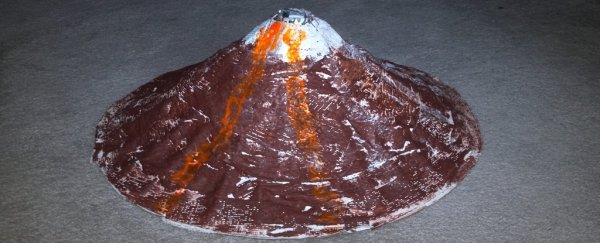The erupting volcano is the poster-child for classroom science fairs around the world. But as exciting as this timeless do-it-yourself experiment is, when it is not done properly, it can raise serious safety concerns.
A working volcano model exploded this week at a science workshop in the city of Kochi, India, sending fragments of paving tiles and stones hurtling into a crowd of students.
The blast ended up injuring 59 students and a teacher at Holy Family High School.
Many of the injuries were deemed minor, but two students were sent to hospital with a "deep injury" in the forearm and an injury to the eye. Luckily, the latter wound will not affect the child's vision, according to hospital reports.
While there were three other volcano models at the science workshop that day, only one of them went awry. This one was prepared by a mother, whose child was keen to participate in the event as they had won prizes in the past.
The model volcano was made by filling PVC pipe with vinegar and baking soda. This combination forms carbonic acid, an unstable chemical compound that has been wow-ing students for decades.
Tile and stone were also added to the model to control and sustain the resulting explosion. The structure, however, did not hold.
"Later, it was covered with mud in thick layers to make a mountain," headmistress of the school Sr Sany Jose told The Times of India.
"It is suspected that the mud cover was thick and it put pressure on the plastic bottle containing vinegar and baking soda. This might have led to the explosion."
But this is just a hypothesis for now. The local police are currently looking into what caused the explosion specifically.
"We are yet to identify what triggered the explosion," said police spokesperson Sony Mathai.
"We have sent the materials collected from the site for chemical analysis. We will know what triggered the explosion only after getting a chemical analysis report."
In the meantime, a case has been registered against the school on the charge of 'negligent handling' of explosives.
Active learning and first-hand experience are extremely important for scientific learning. But while accidents like this one are certainly rare, they do reinforce the need for strong safety regulations in science classrooms, especially when there are explosives involved.
